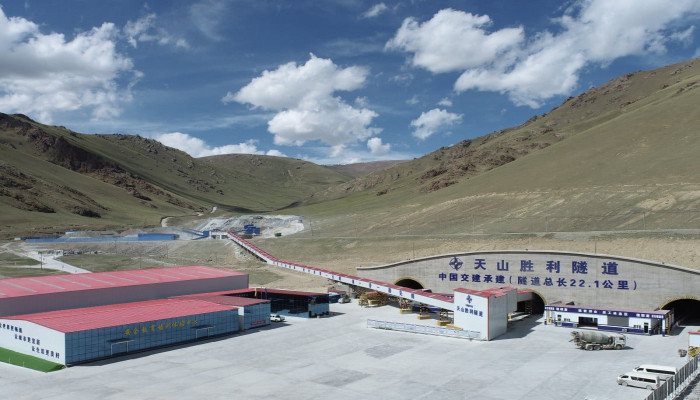China’s Xinjiang building world’s longest highway tunnel in play for regional connectivity
- In Reports
- 12:06 PM, Dec 02, 2023
- Myind Staff
China is currently constructing the longest highway tunnel in the world by far. It will cross one of the longest mountain ranges on Earth and create new routes for trade between the Xinjiang Uygur autonomous region of the country and Central Asia, which experts say is becoming a more important region for international trade.
According to state media, the Tianshan Shengli tunnel, a critical part of the Urumqi-Yuli Expressway, would function as a vital transportation link between the region's southern and northern portions.
When opened to traffic by the end of October 2025, it will cut travel time through the Tianshan Mountains to about 20 minutes. The trip from the region's capital, Urumqi, to Korla, the two most populous cities, will take about three hours instead of more than seven.
The tunnel, which is expected to span a total length of 22.1km (13.7 miles) when finished, is the longest currently under construction.
“Completion will certainly benefit trade and economic growth in the underdeveloped part of Xinjiang,” said Xu Tianchen, an economist with The Economist Intelligence Unit.
According to Xu, as China strengthens its diplomatic and economic ties with Central Asia, the region will become a more significant pivot as a final market and a transit hub. Additional infrastructure development, such as the building of the China-Kyrgyzstan-Uzbekistan railway, is probably in the works to improve connectivity.
“The repackaged [Belt and Road Initiative] places a greater emphasis on operating risk and investment returns. In that sense, Central Asia provides a reasonable return-risk mix, especially with its rich energy reserves and acceptable security situation,” Xu said.
The US and EU have imposed separate sanctions and export controls on Xinjiang as a result of allegations of human rights violations, espionage, and support for Russia's war in Ukraine, all of which Beijing has refuted. As a result, the region has become a geopolitical flashpoint between China and Western nations.
Additionally, China has made an effort to take advantage of Xinjiang's unique geographic advantages, most notably its shared border with eight nations—Pakistan, Kyrgyzstan, Kazakhstan, Tajikistan, Russia, and Mongolia—all of which are vital to China's Belt and Road Initiative.
Enhanced transport networks would strengthen Xinjiang’s broader infrastructure links with Central Asia, said Peng Peng, executive chairman of the Guangdong Society of Reform, a think tank connected to the provincial government.
“There are already numerous channels for railways, highways and aviation, while cultural exchanges such as group tourism and self-guided travel are relatively scarce. The new pathway could diversify trade methods and even extend to further cultural and tourism exchanges,” Peng said.
In a further indication of Beijing's desire to increase its economic influence, earlier this month, Xinjiang revealed plans for a new free-trade centre.
A pilot scheme will be employed in three parts of the region – Kashgar, Khorgos, and Urumqi – and it could be up to five years before Xinjiang officially becomes a free-trade zone, according to a notice posted on the website of the State Council, China’s cabinet.
Image source: Weibo







Comments